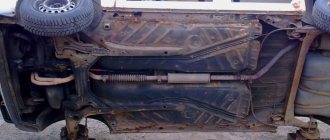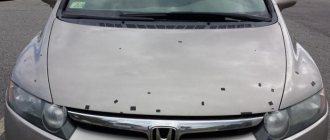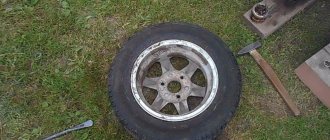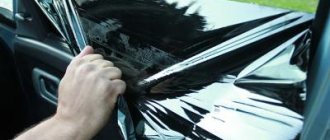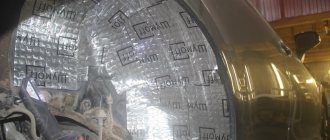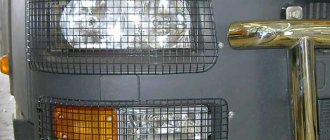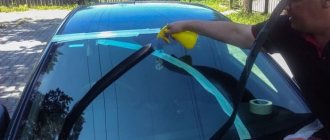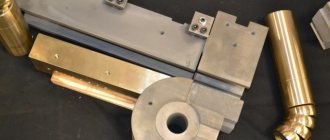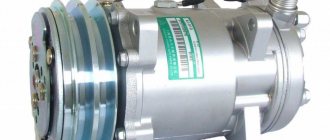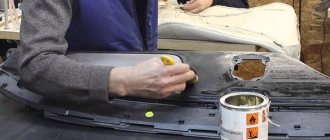A damaged layer of paint on a car body gives the green light to metal corrosion. Arches are the most vulnerable places, as they are constantly exposed to damaging and negative factors.
Mechanical and chemical agents are used to remove rust. After cleaning, it is equally important to properly protect the metal surface from a new corrosion process.
We’ll tell you in this article how to remove rust from car arches with your own hands.
Removal methods
All methods of combating corrosion that has begun on car arches are divided into two large groups: mechanical and chemical. Before choosing one method or another, it is necessary to assess the general condition of the problem area.
Any product, one way or another, thins the metal, therefore, in the presence of deep corrosion, it is not recommended to use strong or damaging products.
Mechanical methods
Cleaning the surface with abrasives helps remove any layer of corrosion . Another advantage of this method is its cost and accessibility.
However, the work requires the use of physical effort, since removal occurs through mechanical surface treatment. Conditional disadvantages also include the duration of cleaning.
To work you will need a grinding tool . It could be:
- sandpaper of different grain sizes;
- brush with metal bristles;
- sandblasting machine;
- screwdriver with a metal brush;
- electric drill with stripping attachments;
- grinder with abrasive discs.
The rust-covered arch is first washed to remove dirt and dust.
Then it is carefully processed using a tool, trying not to create large scratches. Transitions from one area to another should be smooth so that in the future the protective coating lays down in an even layer. If the rusty stains are multi-layered, then first use sandpaper or nozzles with coarse abrasive to remove them .
After this, sand the surface with fine-grained sandpaper. To get the best result, after mechanical cleaning, the arches are treated with a rust converter, which removes small traces of corrosion.
Chemicals
Reagents that interact with metal oxides do not leave traces on the metal surface. This is how they compare favorably with the mechanical method.
The advantages also include a short cleaning time and the ability to use in hard-to-reach places . However, if the metal on the arches has become very thin due to rust, then there is a risk of holes appearing if very strong chemicals are used.
The arsenal of anti-corrosion reagents includes both commonly used household products and those specially developed by the chemical industry.
Folk remedies include:
- ammonium,
- oxalic and orthophosphoric acids,
- caustic soda,
- Coca Cola,
- formalin,
- sulfuric acid.
Professional liquids and pastes may include:
- acids (orthophosphoric, hydroxycarboxylic),
- alkalis,
- anti-corrosion inhibitor,
- monophosphate zinc and other active substances.
The most popular and effective are:
- Lavr . Contains organic and inorganic acids, surfactants, complexone. The action time of the reagent is from 10 to 15 minutes. Price - 250 rub.
- ASTROhim Antiruster . The spray contains active zinc ions and phosphoric acid. Removes rust in 20 minutes. Price - 200 rub.
- AUTOPROFI . The converter contains orthophosphoric acid, a surfactant, and a corrosion inhibitor. Creates a protective film on metal. Cost - 250 rubles.
- Zinkor . It consists of several products designed to remove traces of rust and apply protective galvanization. Prices - from 960 rub.
- Chemist . Zinc primer is designed to remove traces of rust and protect metal. Does not require rinsing when used. Price — 170 rub.
Each chemical should be used according to the attached instructions in order to effectively remove rust without damaging the metal.
Advantages of anticorrosive
Cordon is highly effective against rust. It is waterproof, makes the surface airtight, so corrosion stops its development. The product can be called heat-resistant, since it easily tolerates both cold and heat up to +100 degrees and can be used in any climate.
Cordon anticorrosive is universal - it can be used to protect the car body, any metal products and structures from damage. The product can also be applied to wooden surfaces or used on other substrates to protect against moisture and for sound insulation purposes.
“Cordon” is easily applied to surfaces that have not undergone preliminary preparation, and to parts previously treated with another anticorrosive agent. The composition is ideally combined with paintwork materials, other protective and decorative coatings, the degree of its adhesion does not decrease in any weather conditions. The waxy layer cannot be washed off even with the use of cleaning products.
Further protection against corrosion
The cleaned surface of car arches requires mandatory protection. If metal is left exposed, it will inevitably develop rust after a while. The coating includes several layers that are applied in a certain sequence.
The work algorithm looks like this:
The cleaned area is degreased with a solvent.- Wipe with a cloth to remove dust particles.
- After drying, the cleaned arches are primed.
- A thin layer of putty is applied to the “bare” areas.
- After drying the first layer of putty, make a second one.
- When the putty dries, sand it with fine sandpaper.
- Apply two or three layers of primer that matches the color of the car.
- Cover the arches with paint in 2-3 layers at intervals of 15-20 minutes.
- If desired, apply a clear varnish to the surface.
Before painting, you should cover the wheels and car body with polyethylene or paper to prevent paint from getting on them.
Properties and composition
Cordon anti-corrosion protective agent is sold in different forms - 1 kg and 2.3 kg cans, 520 ml and 650 ml aerosol cans, 1000 ml euro cans. The composition of the anticorrosive agent is represented by the following components:
- polymers;
- bitumen;
- rust converters;
- corrosion inhibitors;
- synthetic rubber;
- fine fillers;
- plasticizers;
- organic solvents.
Cordon is an effective and high-quality material for protecting metal from corrosion. It is designed for processing external parts and hidden cavities of the car, as well as for noise protection of the underbody and wheel arches. As the composition dries, a black wax-like coating is formed, impervious to moisture and possessing a high degree of adhesion to various paintwork materials. The product can be applied to factory paints and varnishes. It has excellent elasticity, does not deteriorate from vibration, and can withstand temperature changes ranging from -50 to +100 degrees.
Technical characteristics of the composition:
- appearance - black paste-like mass;
- consumption - 0.78-1 kg/sq. m;
- adhesion - 1 point;
- dry residue share - 65–70%;
- degree of grinding - 70–100 µm;
- impact strength - 50 kgf/cm;
- conditional viscosity - 60–150 s (according to the VZ-246 device).
What not to do and why?
If rust develops strongly, cleaning the arches must be very careful. The use of strong mechanical stress, as well as aggressive chemicals, can result in the appearance of holes in thin metal.
It is also unacceptable to use converters beyond the time specified in the instructions. If you leave the reagent for a long period in the hope of removing a thick layer of rust, the result may be negative: the active substance will “eat through” the metal.
When corrosion has just begun, you should not use an angle grinder . It is intended only for removing large deposits of oxides. In an area with a thin layer of rust, the grinder disc can damage the metal.
Application in construction and other fields
Despite the fact that Cordon mastic is intended for treating car bodies against rust, it is widely used for other purposes:
- creating hydrophobic coatings on metal structures, structures made of wood, concrete, including those working when buried in the ground (layer up to 1 mm);
- protection of concrete supports, foundations, walls that are regularly exposed to moisture (layer up to 0.4-0.7 mm);
- anti-corrosion coating of pipelines, containers and other metal products (layer up to 1.5 mm);
- renewal of old roofing materials using conventional painting (layer up to 0.3 mm);
- sealing seams, joints of different structures (with a dense layer until the cracks are completely closed);
- priming bases made of brick, concrete, and other building materials before finishing work, gluing floor slabs, parquet, applying insulation (in a thin layer when diluting “Cordon” to the state of ordinary paint).
Garages, greenhouses, fences and roofs are often coated with anticorrosive to protect them from rusting and damage from moisture. It helps save wood from rotting and is widely used in the construction of soft roofs. Versatility, ease of use and efficiency make the composition in demand in industry, car repair and at home.
Adviсe
To avoid costly repairs, it is important to promptly clean the car arches from any rust stains that have appeared. To do this, it is necessary to use the most effective means and follow preventive measures.
Car owners are recommended to:
keep the vehicle clean;- park the car in a dry, ventilated garage;
- cover the body with polishing compounds;
- do not delay cleaning work from corrosion;
- combine mechanical and chemical methods;
- clean not only the front, but also the inside of the wing;
- thoroughly dry each protective layer;
- Rub the putty thoroughly to eliminate roughness.
To prevent the appearance of rust, it is useful to treat the undamaged surface of the arches (and the body as a whole) with special polishing agents. They create a thin film that prevents moisture and dirt from penetrating microcracks and paint chips.
Mastics based on:
- bitumen,
- rubber,
- liquid plastic.
There is a lot of useful and important information about methods of fighting rust on a car in this section.
The essence of car anti-corrosion treatment
Moisture and chemical reagents have a negative effect on the condition of the metal. As a result, it loses its strength and over the years can crumble just before our eyes.
If this problem is not given due attention, then over time rust will appear, which is more difficult to fight, but you can still slow down the process of its development.
Anti-corrosion treatment of the machine significantly extends the service life and provides a protective function. This way the body surface will be reliably protected from all environmental influences and the natural aging process.
When starting such work, it is necessary to decide on the frequency of the procedure.
The procedure directly depends on the car itself, its condition, and brand. Of course, if you just purchased a brand new foreign car, but for the next few years you don’t have to think about this problem.
If you have added an inexpensive car to your garage, you should immediately carry out the treatment, because the manufacturer probably did not provide proper care.
The compounds used to treat wheel arches and the bottom provide protection only from mechanical influences. If you want your car to serve for a long time, you should treat it with anti-corrosion agent once a year.
This frequency will allow for a diagnostic inspection and the elimination of minor damage that has already occurred on the protective coating.
Stages of car anti-corrosion treatment
Before you begin the actual work, you should decide on the necessary tools and the surface itself.
The main items that may be needed are a drill, brushes, cotton napkins, and spray equipment.
The main stages of applying anikor in hard-to-reach areas:
1. Clean your car from dirt. The best results will come from multi-stage cleaning with warm water.
Use a jet of water to remove any stuck-on dirt. Only then use detergents; at the end of cleaning, you should rinse the car.
Until the body is dry, you should not proceed to the following steps. After all, no material will stick to a wet surface.
2. The wipers are removed, the trunk and interior are freed, which is then covered with film for protection. Cover the pedal before work, because if anticorrosive gets on it or the path, then slipping with your shoes cannot be avoided.
The interior of the car - cavities are covered using a flexible nozzle, which is inserted into the hole until it stops. Continuously spraying the anticorrosive agent, remove the nozzle back. There is no specific speed for performing this procedure.
3. A high-quality application can be considered when drops begin to release through the technological holes. If you couldn’t immediately achieve such a result, then you should do it all over again.
Article on the topic: The difference between inspection and search of a car
The reason may be that the cavity is cluttered with various fasteners, rust or dirt. In this case, it is necessary to use a metal nozzle.
4. Drilling of the body can also be considered as preparatory work if it is necessary to get to internal cavities that are hidden from external eyes.
Carefully inspect the body to find all the technological holes and so that you do not have to make them yourself by drilling. Find everything that is available, whether it is made by yourself or in a factory.
To make a hole yourself, use a metal drill with a diameter of 13.5 mm. Carry out such work only where there is one profile layer.
If you do this in the area of double profiles, then you will significantly reduce the reliability of the body. Areas that are already affected by corrosion should not be touched.
Step-by-step anti-corrosion treatment of the body and its components:
1. A more popular service can be considered processing the bottom and arches. The bottom is prepared on a lift or inspection pit.
Treat hidden surfaces, go through all joints, remove fender liners. The anticorrosive agent should be applied in an even layer over the existing coating. When treating the hood and engine compartment, be careful not to get the product on the generator or radiator.
A slippery substance will impair engine cooling. Under the hood there are welded seams that need to be thoroughly coated with anti-corrosion coating.
Apply the product around the optics, suspension amplifiers, and clutch cylinder. Treat the entire hood cover.
2. When processing the luggage compartment, special attention should be paid to the hidden seams of the body. Try to use a variety of attachments to make it easier to access hidden cavities.
Treat the luggage compartment floor with a thin layer of mortar. To prevent oxidation of the contacts, it is worth treating the back side of the lights.
3. Before applying anticorrosive, decide which parts of the body will be treated. Especially for this case, prepare the surface in advance.
As soon as you check the presence of a protective coating on the seats, you can immediately get to work. box-shaped elements under pressure are processed not only inside, but also outside.
4. The next stage of work is processing the door opening. Processing is provided here for connections and for hidden cavities of thresholds.
Try to avoid heavy spraying so that no marks are left on the interior components. When processing the door, be sure to pay special attention to the mechanisms. Anti-corrosion compounds have absolutely no effect on electrical contacts; damage can only be done mechanically.
For example, if you sharply insert a nozzle into a hidden cavity. If there are too many additional elements on the doors, you can always use the technical holes that are located at the bottom of the door.
5. Treat the thresholds, side members and pillars with Movil type preservatives. The mastic is applied for 2-3 hours, after which it is worth using anti-gravel in cylinders.
No matter what quality the anticorrosive agent is, it is not able to stop the process of metal destruction, but it may well slow down this process or delay it.
The effectiveness of the procedure directly depends on the quality of the selected materials, compliance with spraying rules, driving speed, as well as the general condition of the car.
If you want to prevent the problem from the beginning, then monitor the integrity of the surface, because the appearance of the slightest flaw leads to the rapid development of corrosion.
On average, a protective coating can last from 1 to 3 years, it all depends on the level of wear of the product. Bad weather conditions are the main reasons for the destruction of anti-corrosion coating.
A heated car body negatively affects the wax, which drains; when cooled, it hardens and adheres better to the body. If you have a bitumen composition, then in the hot season it will behave decently, but this cannot be said in frost conditions, under the influence of which it will simply begin to crack.
The cause of immediate wear of the anti-corrosion coating can be considered to be an initially incorrect application procedure.
Therefore, if you decide to apply the coating yourself, you should take this issue seriously and approach it responsibly.
Not only the external condition of the car, but also its service life depends on the results of the work performed.
Materials for work
The components that are used in these works are components for the bottom of any body, the internal components of the surfaces of the wings.
Using them correctly, you will ensure the protection of every part of the body.
1. For the underbody of a car. Their task is to form a kind of protective film on the surface. They are applied only after cleaning and priming.
The composition must contain elements (inhibitors) of corrosion, as well as fine aluminum powder. If you apply the composition yourself, then you should use a regular brush.
Of the domestic options, bitumen mastic containing crumb rubber is most suitable.
2. For wheel arches. This area is most subject to abrasive wear. Snow, sand, dirt, and stones fall on the surface. Therefore, this area requires even more attention and care.
Coating materials have in practice the same properties as those listed above. As protection, you can use plastic shields, as well as apply liquid locker, which is a durable elastic element.
Apply this material in a dense layer and this is the only way you can avoid the consequences of abrasive wear. You can also use materials for the lower part of the car, but apply them in two layers; use a brush when working.
3. For hidden cavities. Spars, floor reinforcements, racks - all these are cavities that are hidden from us, but they can be influenced through special holes.
To work with these areas of the body, preservatives for hidden cavities are used, which contain corrosion inhibitors and their consistency is similar to oil.
It is not at all surprising that it is like this, because it must get into all the joints and cracks. The surface will be covered with a film that will protect and, if necessary, displace water from the metal surface. Such materials are even sold in aerosol form, which greatly simplifies all work.
Such a variety of materials will pleasantly surprise any car owner. There are various manufacturers and forms of materials on the market, but how can you choose the best for your car and what will suit it unquestioningly.
